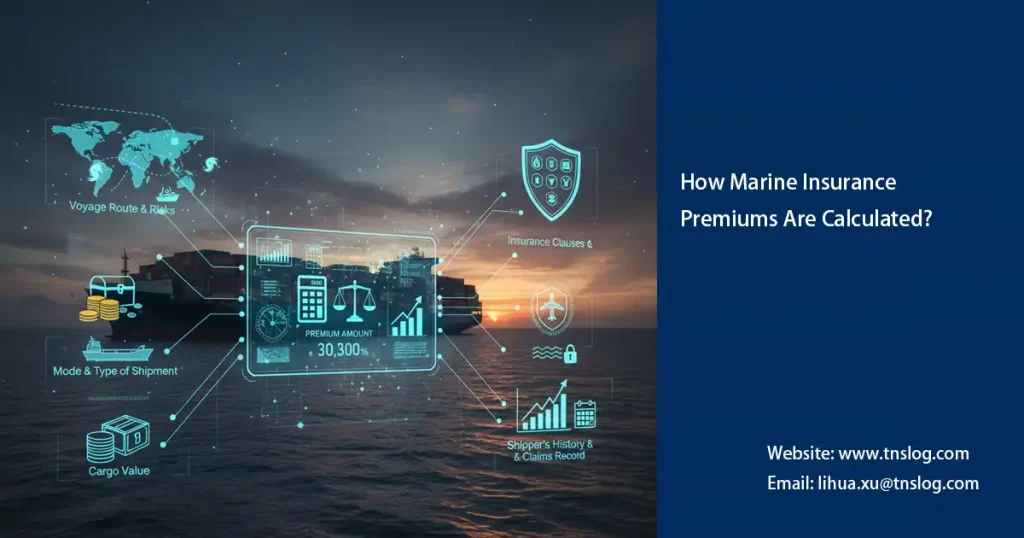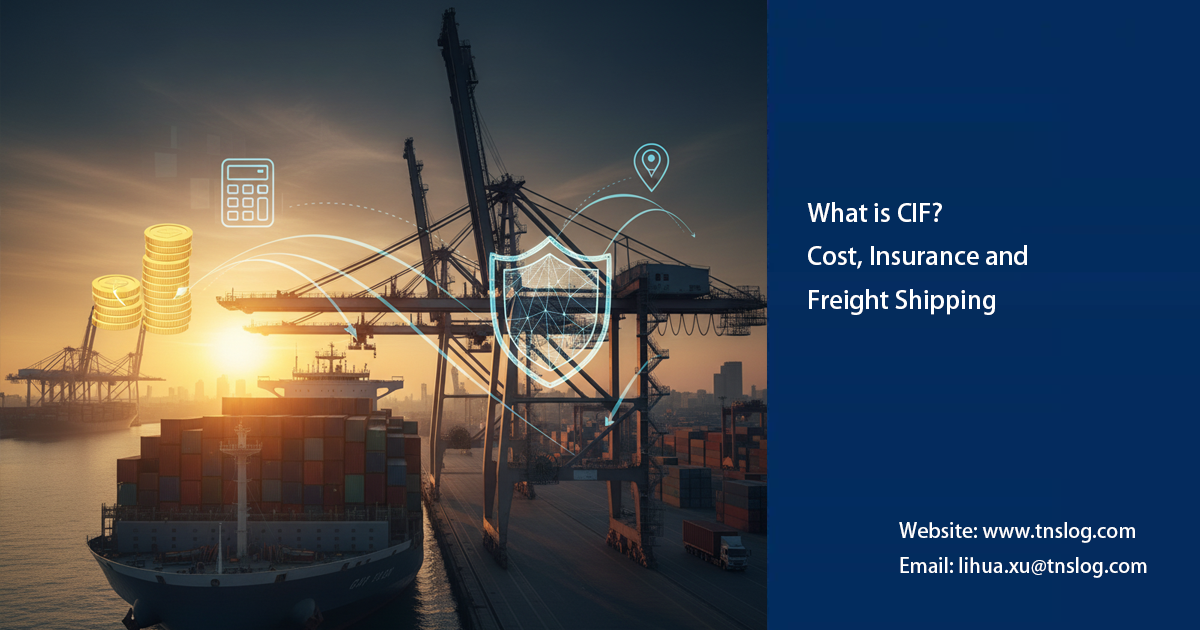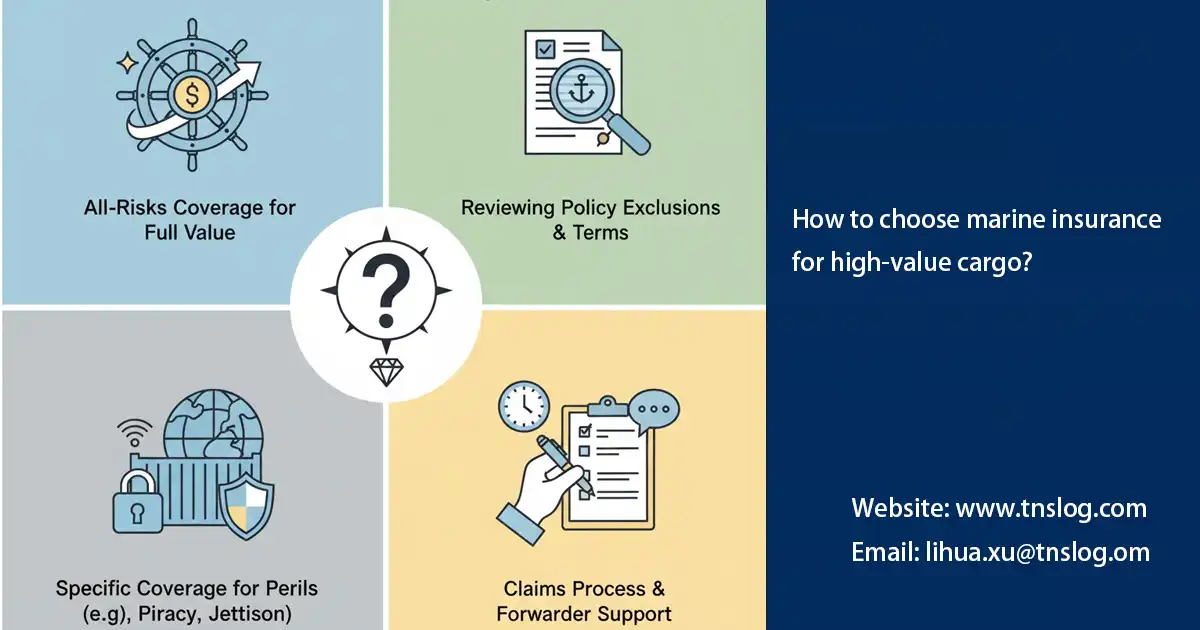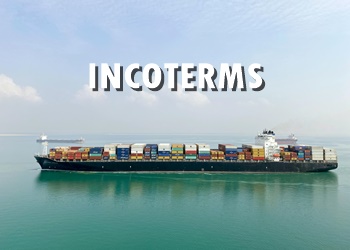How Marine Insurance Premiums Are Calculated?
Have you ever wondered why two shipments of the same value have completely different marine insurance premiums? Or why insurance companies often ask for detailed information about packaging, routing, and consignee before providing a quote?
Understanding how marine insurance premiums are calculated not only helps you better control shipping costs but also helps you choose the most suitable insurance plan—this is especially crucial for businesses exporting or importing goods from Malaysia.
We are TNSLOG SERVICES (Malaysia), an experienced international freight forwarder and expert in marine cargo insurance services. This article will provide a comprehensive and easy-to-understand explanation of how marine insurance premiums are calculated for exporters, importers, and logistics managers, helping you quickly find practical answers.

1. What are the main factors affecting insurance premiums?
1. Type of Coverage
The type of insurance you choose has the most direct impact on your premium. Common marine insurance policies are generally categorized into the following types:
- All Risks (ICC A): This offers the broadest coverage, covering virtually all unexpected losses (except for excluded liabilities) and carries the highest premiums.
- Named Perils (ICC B or C): This covers only specific risks (such as fire, collision, and sinking), and offers relatively lower premiums.
- Total Loss Only: This only pays if the cargo is completely lost. This offers the lowest premium and the most limited coverage.
If you’re still unclear about the differences between the various types of insurance, please refer to our detailed explanation:
👉 Overview of Main Types of Marine Cargo Insurance
2. Cargo Value
The premium is typically calculated as a percentage of the insured value of the cargo, which is usually the CIF value or CIF + 10%.
For example, if the cargo is worth RM100,000, the insurance coverage might be RM110,000 (CIF + 10%).
The higher the value of the cargo, the higher the total premium. However, larger shipments may receive rate discounts due to their size.
3. Shipping Route
Different routes have different risk levels, which directly impact insurance premiums:
- High-risk routes (such as those in areas prone to piracy or political instability) will incur higher rates;
- Routings subject to severe weather or seasonal typhoons will also incur premium increases;
- Direct routes generally have lower risk, while routes with more intermodal transport or transit points will have higher risk.
4. Other influencing factors
- Cargo type (e.g., fragile, dangerous goods, valuables)
- Packaging method and transportation conditions
- Vessel type, age, and class
- Claims history and insured reputation
- Deductible setting
- Freight forwarder or insurance channel (whether through a professional agent)
2. Risk Assessment Methods of Insurance Companies
Before calculating premiums, insurance companies conduct a detailed risk underwriting assessment. The key process includes:
- Insurance information collection: cargo name, packaging method, transportation route, shipper, consignee, trade terms, etc.
- Claims history: assessing the insured’s past risk history;
- Vehicle assessment: including the vessel’s safety rating, age, and shipping company’s reputation;
- External risk data: such as seasonal weather, route risks, and the frequency of piracy;
- Rate determination: After comprehensively stratifying risk, the rate (per thousandth or percentage) is determined, along with any possible surcharges.

Practical tips to reduce ocean insurance premiums
As a local freight forwarder in Malaysia, we frequently help clients optimize their insurance premium structures. Here are a few practical tips:
- Accurately declare cargo values to avoid under-declaration that could lead to claim rejections;
- Choose insurance based on risk. For non-high-risk cargo, consider ICC(B)/(C);
- Consolidate small shipments to avoid paying multiple minimum premiums;
- Improve packaging. Certified packaging or loading can earn you discounts from insurance companies;
- Reduce transit times for direct shipping, which reduces risk and offers better rates;
- Moderately increase your deductible in exchange for lower premiums;
- Buy insurance through an experienced freight forwarder for better rates and terms;
- Provide loss prevention measures (such as GPS, container sealing, and surveillance records) to lower your risk assessment;
- Only add war or strike insurance when necessary;
- Re-quote annually; insurance market rates fluctuate regularly.
For more practical ways to further reduce costs, read our full guide:
Checklist Before Choosing Marine Insurance
- Goods Name and HS Code
- Insurance Amount (CIF or CIF + 10%)
- Packing and Containerization
- Port of Departure and Port of Destination
- Trade Terms (Incoterms)
- Method of Transport and Estimated Time
- Additional Insurance Required (e.g., Temperature Control, War Risk, etc.)
- Desired Deductible
Have Anything To Ask Us?
Please fill in your email in the form and we’ll get back to assist you soon!




